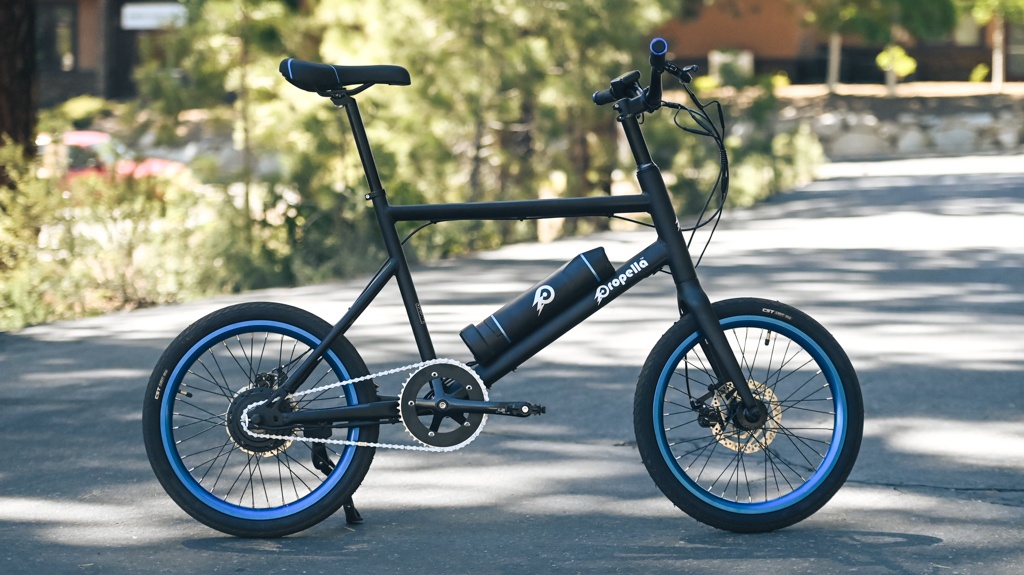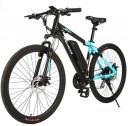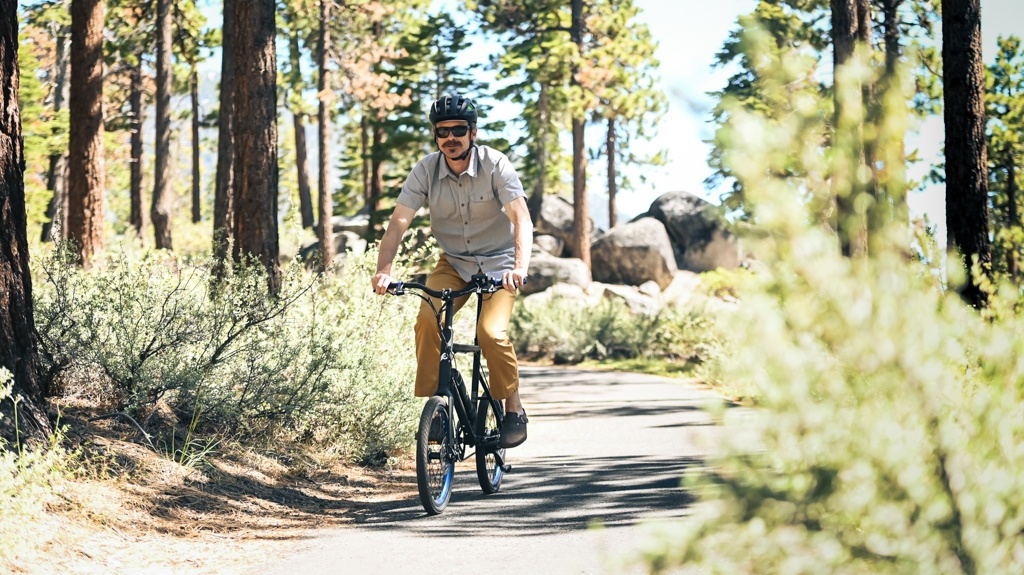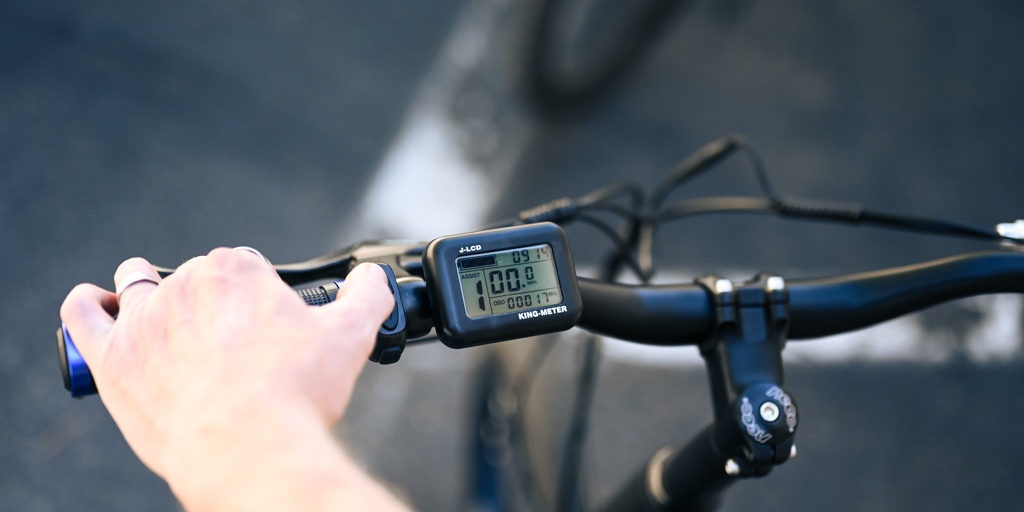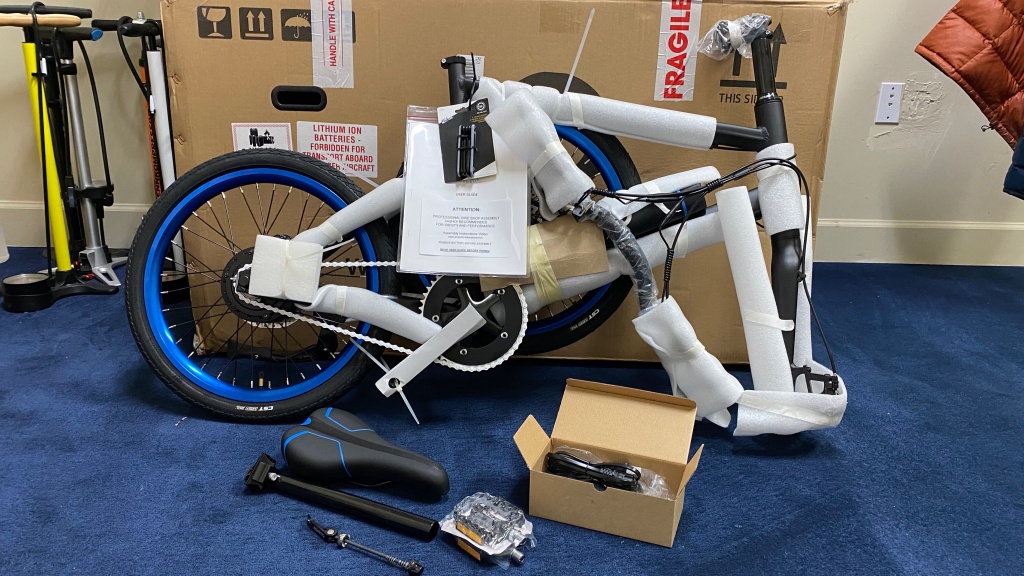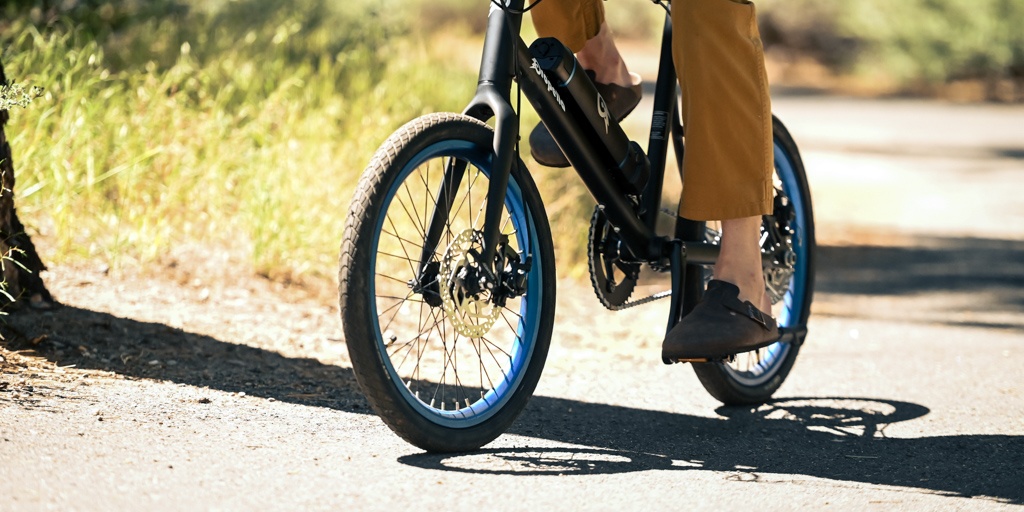Our Verdict
Compare to Similar Products
 This Product
Propella Mini | |||||
|---|---|---|---|---|---|
| Awards | |||||
| Price | $999 List | $1,295 List $1,095 at Ride1up | $999 List $999.00 at Lectric eBikes | $509 List $379.99 at Amazon | $690 List |
Overall Score  |
|||||
| Star Rating | |||||
| Bottom Line | A compact and lightweight Class 1 model best suited to flatter terrain and shorter trips that won't break the bank | An incredible value for a Class 3 bike that is so powerful and easy to ride | One of the more useful and versatile bikes we have tested, especially at this low price | A serviceable mountain bike style Class 2 model with respectable power output and range | A simple, comfortable Class 2 electric bike with loads of features |
| Rating Categories | Propella Mini | Ride1Up Turris-XR | Lectric XP 3.0 Step... | Ancheer 27.5-inch B... | Nakto Camel 250 |
| Ride (25%) | |||||
| Range (25%) | |||||
| Power (25%) | |||||
| Interface (15%) | |||||
| Assembly (10%) | |||||
| Specs | Propella Mini | Ride1Up Turris-XR | Lectric XP 3.0 Step... | Ancheer 27.5-inch B... | Nakto Camel 250 |
| Wheel size | 20-inch | 27.5-inch | 20-inch | 27.5-inch | 26-inch |
| Battery Size (Wh) | 250 | 614 | 500 | 374 | 360 |
| E-Bike Class | Class 1 | Class 3 | Class 3 | Class 2 | Class 2 |
| Motor Power (torque) | 250W | 750W | 500W | 350W | 250W |
| Number of pedal assist settings | 5 | 5 | 5 | 5 | 1 |
| Top speed throttle | N/A | 20 mph | 20 mph | 20 mph | 20 mph |
| Top speed pedal-assist | 18 mph | 28 mph | 28 mph | 20 mph | 20 mph |
| Measured Distance Range | 13.4 miles | 22.1 miles | 24.5 miles | 20.3 miles | 19.6 miles |
| Frame material | Aluminum | Aluminum | Aluminum | Aluminum | Steel |
| Weight Limit | 220 lbs | 300 lbs | 330 lbs | 330 lbs | 250 lbs |
| Measured Weight | 35 lbs 5 oz | 60 lbs 8 oz | 62 lbs 8 oz | 49 lbs 5 oz | 61 lbs |
| Folding? | No | No | Yes | No | No |
| Drivetrain | Single speed | Shimano Altus 7-speed | Shimano Tourney 7-speed | Shimano Altus 24-speed | Shimano 6-speed |
| Brakes | Shimano TX-805 Mechanical Disc | Zoom Hydraulic Disc Brakes | Hydraulic Disc Brakes | Mechanical disc | V-brake front, Coaster rear |
| Additional features | Kickstand | Fenders, front light, 100mm suspension fork, kick stand | Fenders, rear rack, front and rear lights, folding design, front suspension, mounting points for front rack, kickstand, IP-65 rated for water resistance | Bell, headlight, tools, digital display | Basket, headlight, cargo rack, horn, suspension fork |
| Warranty | One Year | One Year | One Year | Two Years on frame, One year on battery, motor, and components | One Year |
Our Analysis and Test Results
Propella describes the Mini as a “compact and lightweight commuter bike perfect for urban riding.” They go on to say “the Mini is perfect for riders seeking to store or transport a bike in smaller living spaces or vehicles.” We find it hard to disagree with these claims, as it is indeed a fairly compact bike, and it is the lightest we've ever tested with a measured weight of just 35 lbs and 5 oz. This Class 1 model has a 250W motor that easily reaches its top pedal-assisted speed of 18 mph and a 250 Wh battery that provides a solid range given its impressively light weight. It has quick handling but lacks the stability and smoothness of models with larger wheels. That said, we feel it's an affordable e-bike that's well suited to flatter terrain, shorter trips, and makes a lot of sense for those seeking a lightweight option that's easier to carry and takes up less space.
Performance Comparison
Ride
The Mini has a ride quality that is dictated by its smaller wheel size and relatively compact geometry. It's quite agile, but not quite as stable as the larger wheeled competition. As for components, simplicity is the name of the game with a single-speed drivetrain and mechanical disc brakes. We found it to be relatively comfortable, with a fairly large range of fit. It is light on features, though that's not too surprising given its low price. Its impressively low weight and compact size are quite unique, however, making this bike much easier to handle and store than other models.
The Mini rolls on 20-inch wheels and tires, and this plays a direct role in its handling, as does its super light 35 lbs and 5 oz measured weight. It is quite nimble and easy to maneuver, but it doesn't have the same sure-footed feel or stability at speed as the larger wheeled competition. We found that it felt a touch nervous at higher speeds, comparatively speaking, and we actually appreciated the fact that it was limited to 18 mph. It never felt unsafe or anything, it just doesn't feel quite as planted or confidence-inspiring when the speeds increase. Its light weight also comes into play when you get off the bike, as it is easier to push, carry up stairs, or load into a vehicle or onto a bike rack than other models. Its compact size also makes it a bit easier to store than larger bikes. Propella also makes other models with larger wheels for those who may be interested in the simplicity of the Mini but would prefer a more stable ride.
As a Class 1 model with a single-speed drivetrain and mechanical disc brakes, it's clear that Propella designed the Mini with simplicity and low maintenance in mind. Other than the occasional brake cable tension adjustment, chain lube application, and tire pressure check, there's little that should ever require any attention. We found everything to work just fine for us during testing, and the brakes performed their duties admirably. Keeping with the simplicity theme, it comes with virtually no included features beyond the adjustable kickstand. We'd suggest to anyone planning to ride at night to invest in some top-tier bike lights for improved visibility.
The Mini has compact dimensions, but it still has a relatively large range of fit. Propella lists a recommended sure height range on their website, with riders between 5'2" and 5'10" being an ideal fit. Shorter riders between 5'0" and 5'1" and taller riders between 5'11" and 6'1" fall into the “marginal” fit category. Our lead tester is 6'0" with a long inseam, and while he was able to make it work, he definitely had the seatpost maxed out. The bike has a bit of a city bike look and feel, with a seated position to match, though how forward-biased your weight is will vary depending on your saddle height. We found the seat to be quite comfortable, although it is on the relatively narrow side of the spectrum.
Range
Considering its smaller 250Wh battery capacity, it didn't come as too much of a surprise that the Mini was one of the least impressive in our distance range testing. Since it is a Class 1 model without a throttle, we had to modify our test slightly. Instead of simply using the throttle to determine the low end of its range potential, we put it in its highest pedal assist level and turned the pedals over consistently but without any pressure or input from the rider. This ensured that the bike's motor was doing all the work, much as it would be if we were just using a throttle.
Propella claims a 20-35 mile pedal-assist range for the Mini. On our standardized range test course, the Mini managed to travel 13.4 miles with 731 feet of elevation gain. The test took just 30 seconds over an hour to complete, with an average speed of 13.35 mph. While this is one of the shortest ranges of all the models we tested, it's important to keep in mind that this bike also has the smallest battery storage capacity at just 250Wh. And, riding for over 13 miles with virtually no effort on the part of the rider is still fairly impressive. We think it's safe to assume you could ride at least double that distance, or more, by putting just a little of your own power down into the pedals, and on perfectly flat terrain one would likely get more range than on the gently rolling hills of our test course. That said, if a long-range is a priority, we think there are better options. We feel the Mini is best suited for shorter trips around town than long commutes.
Power
The Mini is a Class 1 model with a 250W (400W peak) Bafang rear hub motor and a top pedal-assist speed of 18 mph. It is far from the most powerful model we tested, but with smaller wheels, it has a surprising amount of torque. While it was bested by more powerful competitors in this metric, we feel its power output is very respectable and appropriate given the bike's weight, smaller wheel size, and compact design.
As a Class 1 model, the Mini does not have a throttle. To get any power out of this bike it needs to be in one of the pedal-assist modes and the cranks need to be turning. We performed an acceleration test in the highest output setting with the cranks turning but without any effort on the part of the rider, and were very pleasantly surprised by its performance. The 250W motor feels like it has quite a bit of torque, jumping eagerly from a stop and accelerating up to its top speed of 18 mph in just 12.6 seconds. Likewise, it was able to accelerate up our short test hill to 13.5 mph, slowing to only around 12 mph at the steepest part. While that falls short of the bigger and more powerful bikes we tested, we were still relatively impressed given the Mini's diminutive stature.
The Mini has five levels of pedal assist, and it can also be ridden with none at all. The amount of pedaling support increases incrementally as you shift up through the levels, and it was very easy to get it up to its top speed of 18 mph. While 18 mph is shy of the 20 and 28 mph top speeds of most of the other models we tested, we feel it is plenty fast for the Mini with its smaller wheels and shorter wheelbase. It is fairly zippy on flat terrain, but if a super fast and powerful e-bike is what you seek, you'll probably be better off looking into bikes with larger wheels, possibly even some of Propella's other (full-size) models.
Interface
This simple Class 1 bike has fairly a simple but functional set of controls and display. Since it is a Class 1 bike, it does not have a throttle. Instead, it has straightforward pedal-assist controls and a small but perfectly adequate digital display. The battery can be removed for charging on or off the bike.
The controls consist of a left-mounted set of buttons that are super easy to reach with the thumb. The three-button unit is intuitive in its use with a power/mode button at the bottom to turn it on and off or switch between odometer or trip distance on the display. The up and down arrows switch between the pedal assist settings. Pressing and holding the up arrow also switches the speed field from current to average or max, and pressing and holding the down arrow engages the walk mode. The small digital display is mounted next to the controls by the left grip. The screen is 2-inches wide by 1-1/4 inches tall. It has dark numbers on a light background and is relatively easy to read. The battery charge is displayed as a battery graphic with 4 bars that turn off sequentially as the battery is depleted, and to the right of that is the time. The left side of the screen shows the pedal-assist setting (0-5), in the middle is speed (current is the default, can be changed to average or max), and at the bottom is the odometer or trip meter. The display is nothing fancy, but it works perfectly fine, our only complaint is that it's hard to read with polarized glasses on (though that goes for most screens).
The battery sits on a cradle on the downtube of the frame and is locked in place for security. The included keys can be used to unlock the battery, and it pulls up off the cradle with just a little force. The battery can be charged on or off the bike, and it is lightweight (only 3 pounds), compact, and easily portable. A small rubber cover hides the charging port at the top of the battery.
Assembly
The Mini proved to be one of the easiest bikes to assemble in our budget e-bike test group, earning high marks in this metric. It comes mostly assembled with only a few simple steps remaining to complete the process. Thanks to its light, only 35 lbs and 5 oz, weight, it's also much easier to handle and remove from the box than much heavier models.
The Mini is the lightest e-bike we've tested, so moving it in the box is fairly easy as a result, as is removing it from it. Most of the assembly is already finished, and the remaining steps are fairly easy to complete on your own. If you aren't mechanically inclined, Propella recommends taking it to a bike shop. It comes with a manual, but it doesn't have any assembly instructions. Instead, there is a scannable QR code that brings you to all of the assembly videos on the Propella website. The instruction video is about 4 minutes long and gives you a step-by-step rundown of everything that needs to be done. It also comes with a folding multi-tool which is all you need to complete the assembly. We followed the assembly video and had our test bike put together in right around 30 minutes.
Should I Buy the Propella Mini?
The Mini was easily bested by several other bikes in our testing, but that doesn't mean it wouldn't be the perfect e-bike for you. With its impressively lightweight and compact size, this is a sensible option for those that may need to carry their bike up a flight of stairs or are tight on storage space. We feel this relatively simple yet stylish model is a good choice for navigating the concrete jungle or shorter trips around town that won't break the bank.
What Other E-Bikes Should I Consider?
Interested in something more compact? The Lectric XP 3.0 is a folding model that takes up even less storage space than the Mini. Sure, it's a bit (ok, a lot) heavier, but it's also significantly more powerful with a 500W motor and top pedal-assisted speed of 28 mph, it has a larger 500 Wh battery and corresponding distance range.


